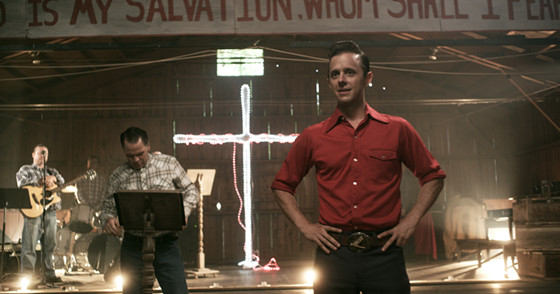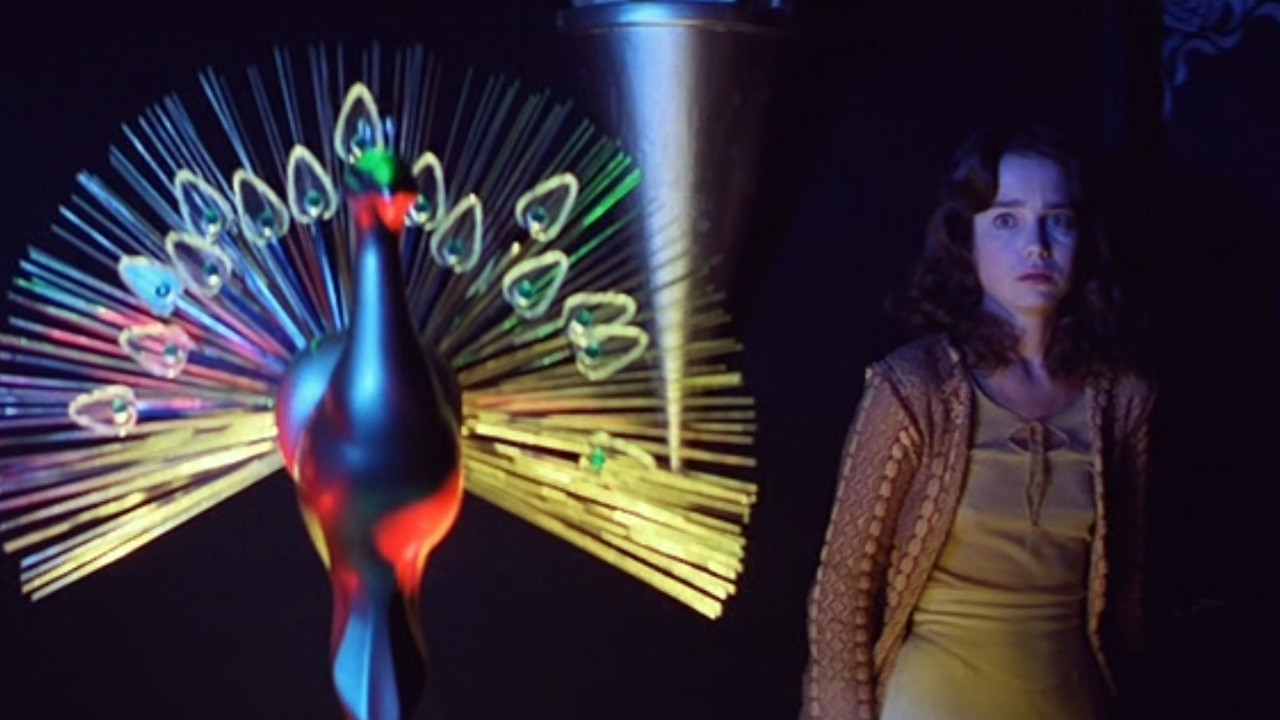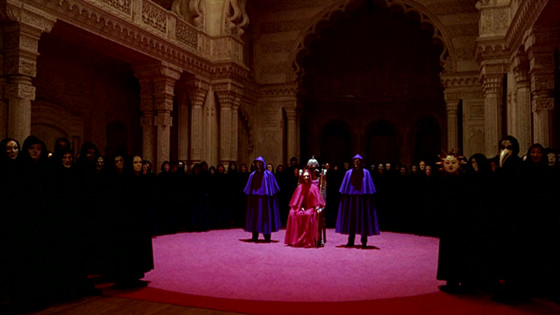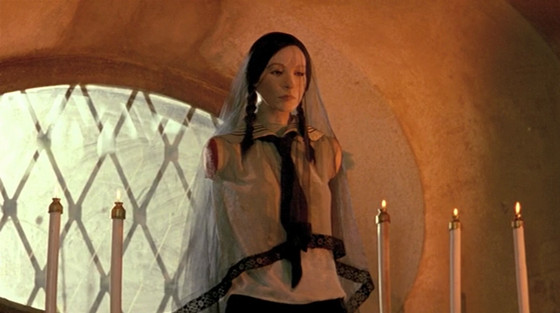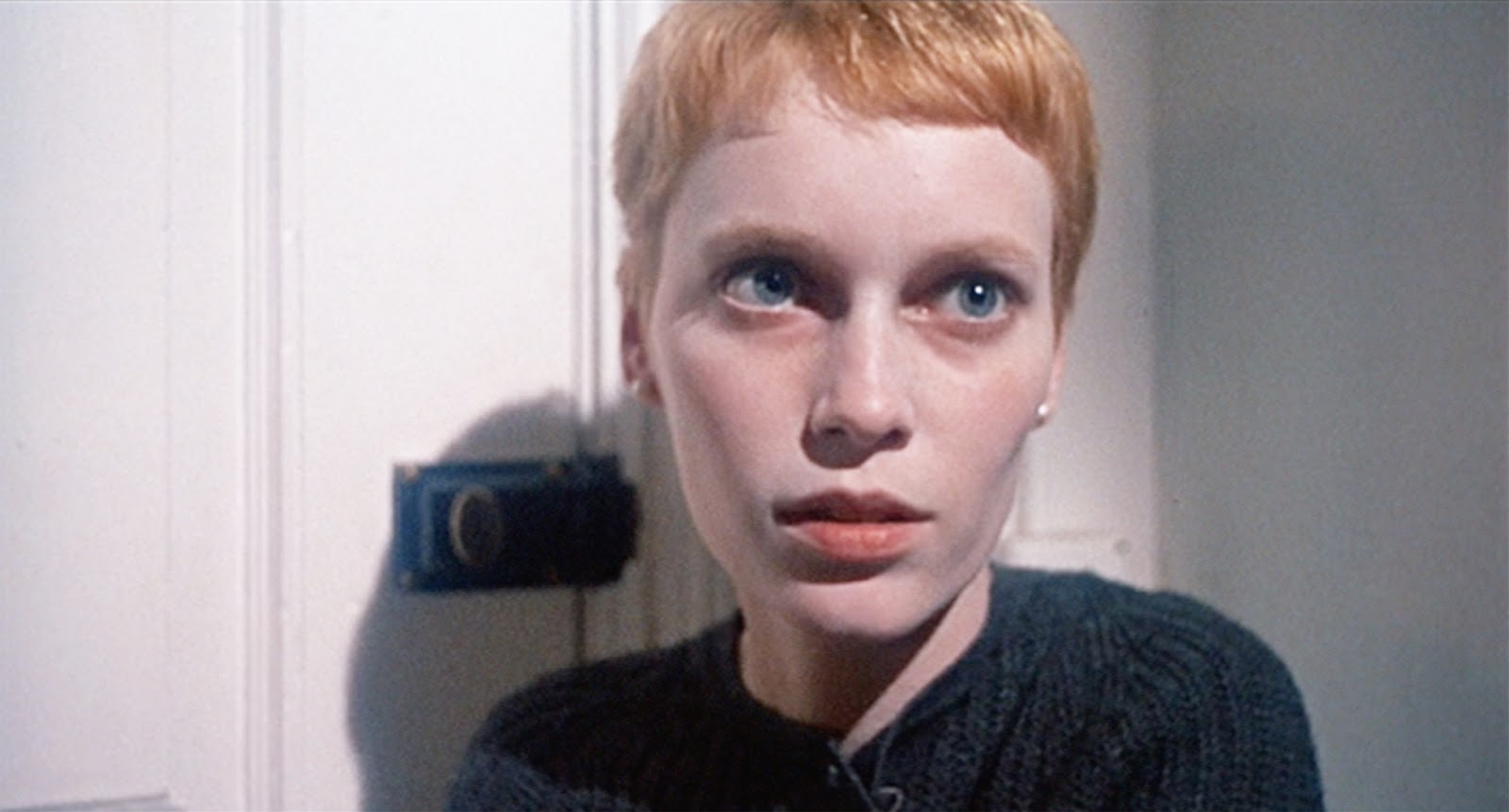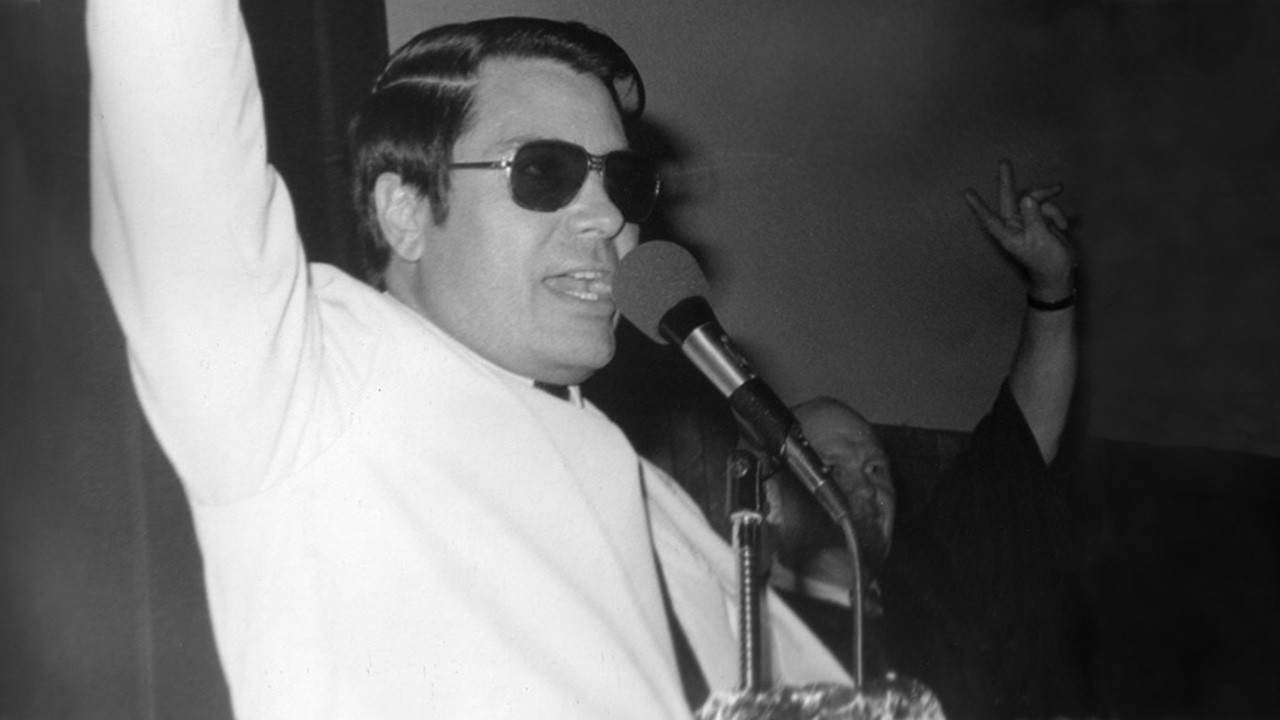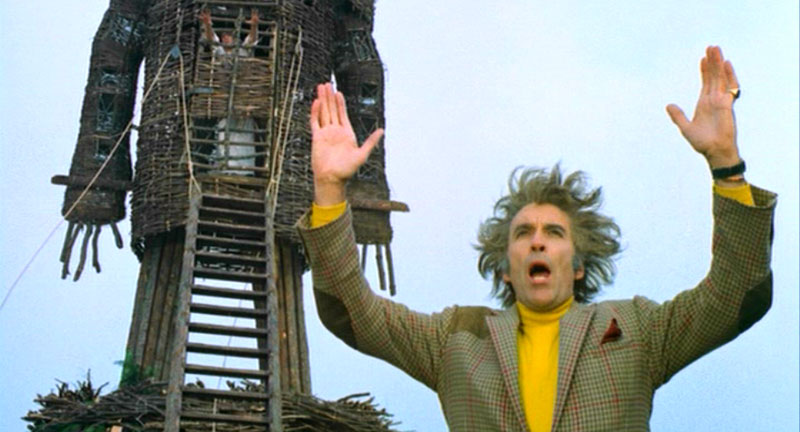7. Holy Ghost People (2013)
Mitchell Altieri’s Holy Ghost People is loosely inspired by the documentary of the same name from 1967 (which can be seen on YouTube, recommended viewing). Charlotte is looking for her sister who has been missing, she finds out that she is at the Church of One Accord, which is situated in the Appalachian Mountains.
Charlotte meets Wayne, an alcoholic ex-marine, outside a bar and asks him for help. Faking their way into the church to find Charlotte’s sister, Wayne finds comfort from his withdrawal. The church is headed by Brother Billy (played by Joe Egender), who takes in any of the struggling outcasts of the surrounding society. They believe wholeheartedly in the salvation of the Holy Ghost and often handle snakes to prove their devotion.
Holy Ghost People gained mixed reviews, a lot of them criticizing it’s narrative structure and ending – but give it a chance, if these themes interest you… It is well worth the watch, with dedicated acting and interesting absurdity.
6. Suspiria (1977)
One of Dario Argento’s most famous films, Suspiria centers around a dance academy in Germany. Suzy, an American, arrives at night, but is turned away until the next morning. As she is leaving she sees someone running away from the school, and the next morning she discovers a series of unfortunate events have occurred there. Strange happenings take place and as she befriends Sarah she comes to find that the ballet academy is really a front for a coven of witches.
Not the most intellectual of films, but it definitely leaves it’s mark. With a fantastic score by progressive rock band Goblin and great lighting, it is a visual and audial delight for the senses.
5. Eyes Wide Shut (1999)
Most Kubrick fans would have seen Eyes Wide Shut, but for those who haven’t it is a dialogue heavy, slow burning, visual treat. Loosely based on Arthur Schnitzler’s novella Dream Story, it weaves the tale of Bill (Tom Cruise) and Alice (Nicole Kidman) who are a married couple both going through midlife crises.
Bill listens to his wife talk about how she fantasizes about other men, he becomes obsessed with this and goes out looking for excitement. He meets an old friend who tells him of a strange place, with strange people for whom he plays the piano.
The focus is narrowed down to humanity and it’s ties with sexuality, sex becomes part of the characters – and that is no surprise considering sex is the natural way of continuing the species. Kubrick was a master filmmaker and Eyes Wide Shut does not disappoint. Amazing camera work and direction, as usual.
4. Santa Sangre (1989)
Alejandro Jodorowsky’s Santa Sangre is a surreal-thriller from the late 1980’s, it explains the life of Fenix. We meet him in an insane asylum and follow him back to his traumatic childhood. He grew up in as a child magician, his father was the the leader of the circus he performed in.
His mother, Concha, was the leader of the cult Santa Sangre (Holy Blood) who worshipped their patron saint – a girl who was raped by her brothers and they eventually cut off both her arms. Concha’s fate follows that of the saint as she reunites with her husband. Fenix is there to pick up the pieces, he acts as her arms as they plan her revenge.
Jodorowsky is one of the greatest art-directors of the last 50 years and although he hasn’t made a lot of films, they are all spectacular experiences. He is part psycho-magician, writer, director, actor and comic book enthusiast, to mention a few aspects of his creative life.
3. Rosemary’s Baby (1968)
Roman Polanski’s Oscar winning film Rosemary’s Baby, based on Ira Levin’s novel of the same title is probably one of the most well known films about a cult ever made. Possibly even one of the most well known and acclaimed horror films of all time. Following on from the insanity of Repulsion (1965) and predating the amazing The Tenant (1976) the viewer is placed once again into Polanski’s terrifying world of crazy neighbours and small apartment buildings.
Rosemary (Mia Farrow) and Guy (John Cassavetes) move into a New York City apartment. They meet their eccentric and compassionate neighbours the Castevets. They are busybodies who are always intrusive. Guy lands an acting job, as a result the couple decided to have a baby.
Everything starts off well for Rosemary, apart from some nightmares. She slowly begins a descent into turmoil as strange events start occurring. Mysterious deaths, peculiar good luck charms that smell of “tannin root”, unexplained blindness and unusual potions. Guy becomes distant. Rosemary becomes increasingly sick, she becomes paranoid that her neighbours and husband have something terrible in mind for her unborn baby.
2. Jonestown: The Life and Death of Peoples Temple (2006)
Stanley Nelson’s documentary Jonestown: The Life and Death of Peoples Temple provides a lot of insight into what happened on the 18th of November 1978 in Jonestown, Guyana. The narrative follows archival footage and accounts from survivors and previous members and associates of Jim Jones’ Peoples Temple.
The organisation was formed during the 1950’s in Indiana by Jim Jones. Jones was born in the early 1930’s and lead an underprivileged and reclusive life. He became obsessed with religion and death. He was pro-equal rights and as he grew older more and more people followed and agreed with him. As his organisation gained criticism from the outside, and as the congregation grew, they moved to different areas and finally to Guyana.
The Peoples Temple lived a cooperative lifestyle, worked on the land and shared most things. Jones became very paranoid about the CIA and other such agencies. He believed they were trying to break down and destroy Jonestown. The longer he remained there, the worse it became – drug use, physical and sexual abuse, members not being allowed to leave. Congressman Ryan arrived in Jonestown on the 15th to investigate rumours of human rights abuse, this stirred things up even further with tragic results.
It is a truly compelling and harrowing documentary. Ti West’s new film The Sacrament looks like it may be based on these events, so keep an eye out for that (I haven’t personally seen it yet).
1. The Wicker Man (1973)
Robin Hardy’s classic The Wicker Man brings the virginal Christian Sergeant Howie (Edward Woodward) to Summerisle – a small Scottish island. He has arrived to investigate a letter he received in England, informing him of a missing child, Rowan Morrison. The screenplay was written by Anthony Shaffer who has written a few scripts with religious themes, so have look into his work if you are interested in that subject matter.
Sergeant Howie is utterly disgusted by the Pagan Religion the inhabitants of Summerisle partake in, he is always yelling at them about “The one true God”, and as annoying as it can be in the beginning, it adds a unique style of black humour into the mix. It also highlights the differences between two religions and how difficult it can be to understand others beliefs.
This film is a musical full of folk songs about sex, fertility and the old ways, but also a horror film – and one of the most unique. All of the townsfolk tell Howie that they have never heard of Rowan, even her supposed mother will not lay claim to her existence. When Howie meets Lord Summerisle (played by Christopher Lee) he learns more of their traditions, he is still appalled and maintains his desire to find the missing girl.
The Wicker Man is elegantly shot, beautifully coloured, slightly surreal and very enjoyable. No wonder it is one of the most acclaimed cult films of the 1970’s.
Author Bio: Rebecca Dodds is a film studies student who has been feverishly watching films for most of her life. She write screenplays in her spare time. Her interests lie in Art, Auteur, Horror, Surreal and World Cinema – and anything weird and wonderful.
